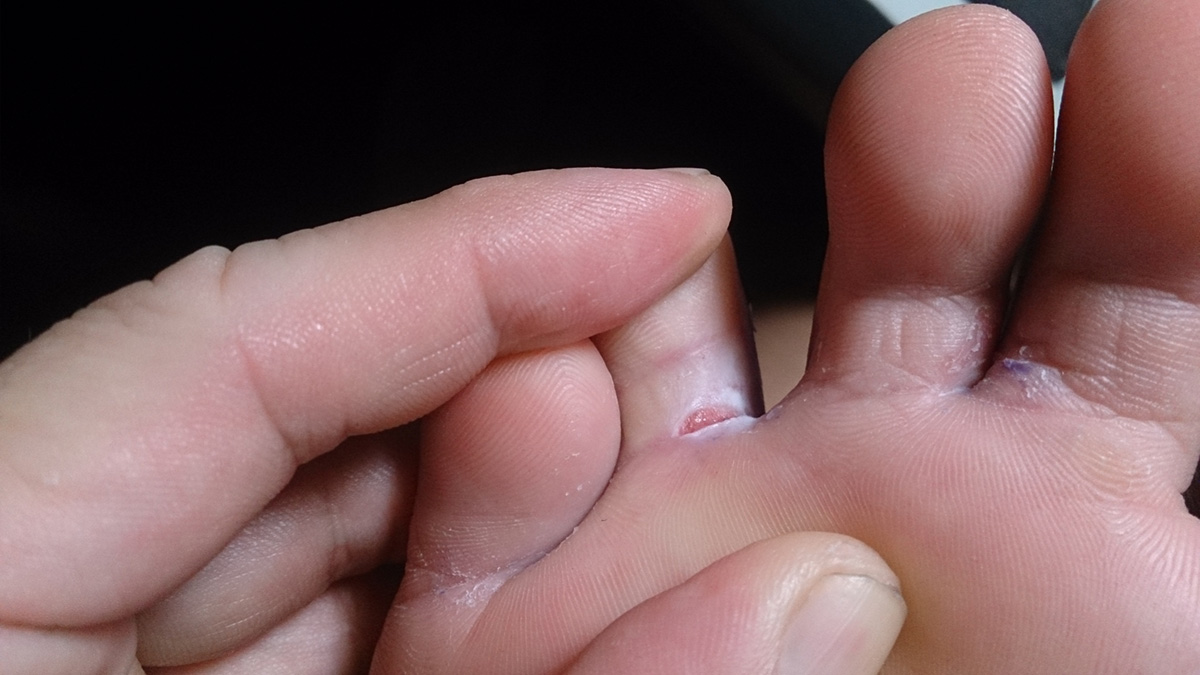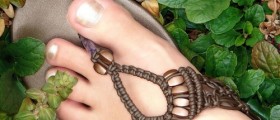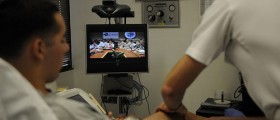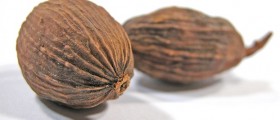
Athlete's foot is a fungal skin infection which most commonly features with scaling, flaking and itchiness of the affected skin. The infection can be transmitted from a person to person by sharing footwear or by sharing towels. The transmission is possible in moist environments where people walk barefoot. This particularly refers to showers, bath houses and locker rooms. Certain parasitic fungi that cause athlete's foot may cause infection of the skin of other body parts. The transmission in this case most commonly affects the toenails and the groin area.
Symptoms of Athlete's Foot
The symptoms of athlete's foot may vary. Some patients complain about unbearable discomfort and other may experience mild symptoms and signs of the infection. But the most common symptoms of the infection include peeling, cracking and scaling of the feet accompanied by redness blisters, softening or breaking down of the affected skin. The person has to face itching and burning sensations.
Interdigital infection is the most frequent type of athlete's foot. The affected skin is soft, moist and pale white. The person may complain about itching and burning and there is also a slight odor. In case the infection becomes worse the skin starts to peel and becomes scaly and cracked. Progression of the infection is accompanied by foul odor.
Moccasin-type infection is a chronic form of athlete's foot. It basically begins as minor irritation and dryness of the affected skin. The skin is itchy and scaly. Further progression of the infection leads to thickening, scaling, peeling and cracking of the skin on the sole or heel. The infection may spread onto the toenails and cause serious damage.
And finally, vesicular infection is a type of athlete's foot which features with a sudden outbreak of large blisters under the affected skin. The blisters are most commonly found on the skin of the instep and may also affect the skin between the toes and the heel. This type of fungal infection may be accompanied by bacterial infection.
Treatment for Athlete's Foot
The type and severity of athlete's foot determines its treatment. Still, in majority of cases patients require antifungal medications. Patients are treated with antifungal such as terbinafine, miconazole, clotrimazole and tolnaftate. These are topical medications and are applied directly onto the affected skin. Some patients are administered oral antifungal medications. Oral antifungal medications are given to patients with severe form of the disease. If fungal infection is accompanied by bacterial infection one will be also prescribed antibiotics. The affected skin is supposed to be kept clean and dry.
Prevention of athlete's foot is obtained by maintaining proper hygiene and dryness of the feet, wearing leather shoes and sandals that allow feet to breath, wearing of cotton socks and their regular changing and using talcum or antifungal powder for feet.
















Your thoughts on this
Loading...